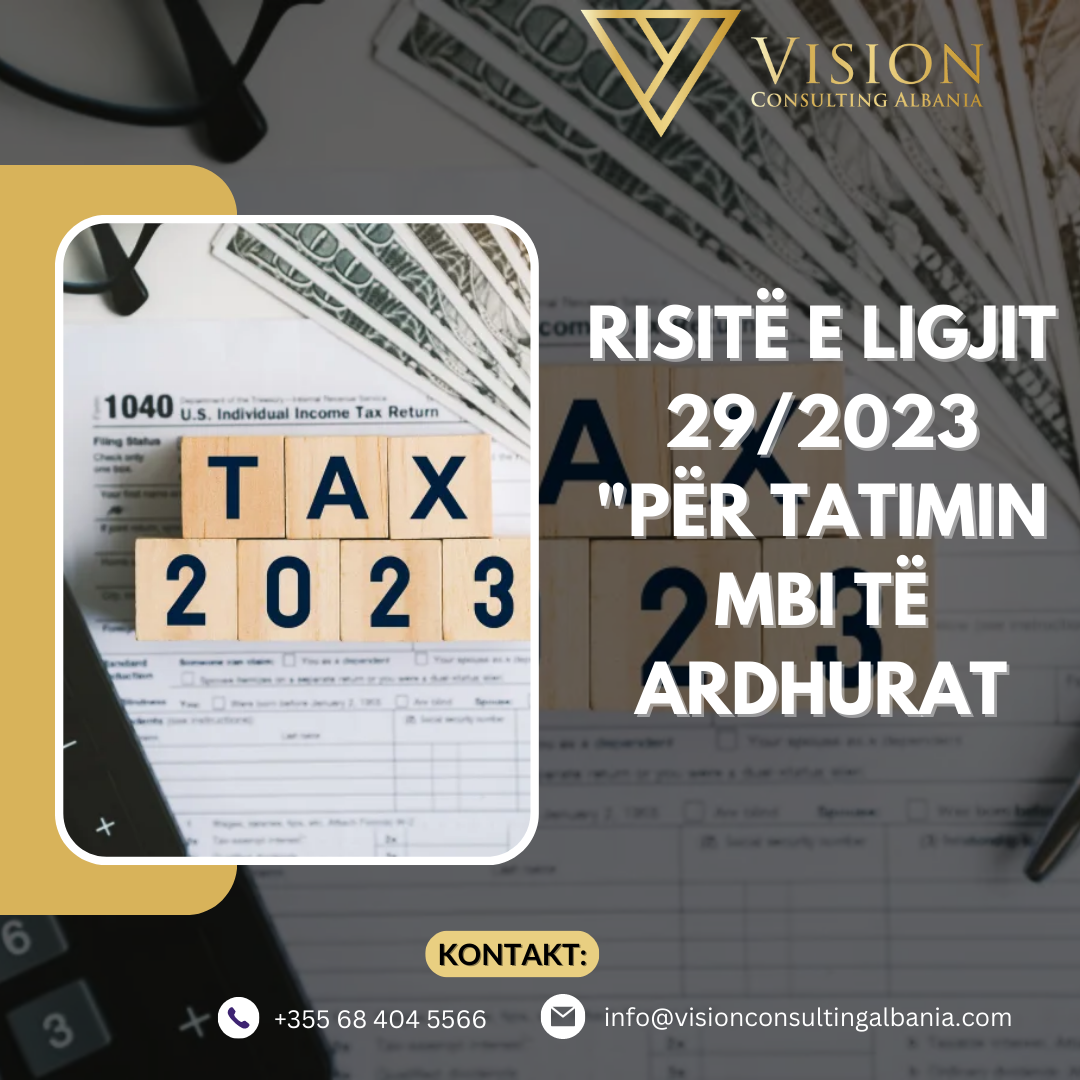
Income tax law, updates and changes. The law on income tax and the by-laws issued in its implementation, regulate the relations that arise in the field of personal income tax, profit tax and withholding tax.
On April 30, 2023, the new law “On Income Tax” was approved, which brought a restructuring and expansion of the main concepts of the previous law. Besides the basic principles which have remained unchanged, this law has brought a series of new innovations based on three main objectives:
- The creation of a contemporary self-declarative tax system where the individual and the entity pay the fair share of the income tax they have, and require the return of this contribution in the form of benefits and improved public services;
- Increasing the contribution to the budget of individuals and entities through income tax, balancing the weight of indirect taxes;
- Providing a fairer and more universally accepted tax system.
The law itself determines the division of income tax into two categories:
- Taxation of individuals and commercial natural persons with personal income tax.
- Taxation of legal entities with corporate income tax.
So, there is a division of the tax profit that has been paid over the years and the concept of tax profit differently for individuals and natural persons, who pay income tax, and differently for entities that pay corporate profit tax.
The law in a balanced manner has defined:
- Taxation of commercial and self-employed individuals, where they will be taxed:
- with the 15% rate on the net profit (income-expenses) when the net profit is up to ALL 14 million per year;
- at the rate of 23% of the net profit, only for the part of the profit over ALL 14 million per year.
- Profit tax for businesses with a turnover of up to 14 million will continue to be zero until 2029.
Thus, for incomes (salary) up to 50,000 ALL taxation will be 0%. For income from 50,000-60,000 ALL, the tax will be 13% of the salary amount above 35,000 ALL per month. For incomes over 60,001 ALL per month, the division is made into three categories. In the first category, the amount up to ALL 30,000 will be tax-free, while the 13% tax will be calculated for amounts over ALL 30,001 to ALL 200,000 per month of income. Meanwhile, for income over 200,001 ALL, the tax will be 22,100 ALL, plus 23% of the amount over 200,000 ALL.
The law provides that for entities that act as “agricultural cooperation societies”, the tax will be 5% until December 31, 2029. For IT Companies, the tax on profit at the rate of 5% will be applied until December 31 2025; for entities that exercise economic activity in the automotive industry, the 5% income tax rate will be applied until December 31, 2029. Fiscal relief will also be available for agritourism, where the income tax rate is expected to be 5% and will to be implemented until December 31, 2029.
3. Rules of taxation of gifts and inheritances, simultaneously providing for tax exemptions for gifts/inheritances within the family tree.
The new law provides a more detailed method of taxation for inherited immovable and movable assets, while it includes for the first time the concept of not imposing tax on donations and inheritances received, other than those defined in the first and second order, for property worth up to 5 million ALL for taxpayers and up to 1 million ALL for movable assets.
The following are exempt from taxation:
a) donations and inheritance received from/or between the legal heirs in the first and second place, according to articles 361 to 363 of the Civil Code, as well as donations and inheritance within the gender relation of sister-brother;
b) donations and inheritances received other than those defined in letter “a” up to 5,000,000 ALL for taxpayers for immovable assets and up to 1,000,000 ALL for movable assets for taxpayers;
c) the transfer of the right of ownership to the legal heirs according to articles 361 to 363 of the Civil Code, namely through donation and/or relinquishment of property, when the property derives from the compulsory co-ownership.
